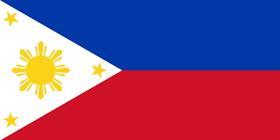
Quarantine officials from the Philippines are set to visit Australia next month to assess Canberra’s application for a revised fruit export protocol that would allow for in-transit cold treatment.
Under the existing protocol, fresh fruit exported from mainland Australia to the Philippines must undergo land-based cold treatment for fruit fly before shipment at 2.2oC for 22 days
While the protocol technically provides Australian fruit with access to the Philippine market, industry sources told Asiafruit that it’s commercially unviable. Key products such as grapes cannot withstand land-based cold treatment for that length of time when coupled with the onward seafreight journey, shippers note. In addition, differing interpretations between the Philippines and Australia over which entities are eligible to export fruit under the original protocol agreed in 1997 have also stymied trade.
Australia has asked the Philippines to allow the cold treatment process to be conducted in-transit and to revise the treatment schedules from the current 2.2oC for 22 days to 3oC for between 14 and 20 days.
“As part of its assessment, the Philippines has requested a trial shipment to verify the proposed in-transit cold treatment protocol,” an official from Australia’s Department of Agriculture Fisheries and Forestry (DAFF) told Asiafruit. “Philippine quarantine officials will visit Australia in March to witness the start of a trial shipment of table grapes and will also inspect the shipment on arrival in Manila.”
While the trial will be carried out on grapes from northwest Victoria, importantly Australia is pushing for the in-transit cold treatment process to be accepted for other key fruit export products, such as citrus and stonefruit.
“Pending a successful trial shipment of table grapes, Australia will be seeking acceptance of in-transit cold treatment for other commodities,” the DAFF official confirmed.
Direct trade to open up opportunities
With direct fresh fruit exports into the Philippines so far stymied by the unviable protocol, Australian fruit finds its way into the market via grey channels, through shipments often originally loaded for Hong Kong or Singapore. In recent years, most of the product entering the Philippines has been transhipped from Singapore to Manila, which adds significant cost and time.
Key sources in Australia’s fresh fruit export business told Asiafruit that opening up direct trade would accelerate market development. Shorter transit times and lower shipping costs would allow Australian exporters to land a fresher, more price-competitive product, they note.
“The Philippines is a good market for grapes in particular,” said one leading Australian exporter. “It’s a step down from the bigger stuff `sized fruit` but it’s certainly a good market to have. More developed markets like Hong Kong, China, Singapore and Malaysia can only take a certain amount of product and the Philippines, together with Indonesia, is a good alternative market.”
In addition to grapes, exporters noted that the Philippines is a market for mandarins and oranges and could also offer some potential for stonefruit.
Brendan Larkin, manager of market access and competitiveness for Indonesia and the Philippines at the Victorian Department of Primary Industries, told Asiafruit that the Victorian state government was keen to explore the opportunity for direct fresh fruit exports into the Philippines.
“We believe the Philippines is a good and growing market,” he said. “It’s home to around 100m people, and the economy is growing, not as fast as Indonesia’s, but affluence is increasing, and they eat an awful lot of fruit.'
One key exporter said he was cautiously optimistic that direct shipments would lead to a significant growth in trade, providing there were no issues with the interpretation of the protocol like those that prevented trade under the original agreement.
Unviable protocol
Under the protocol for Australian fruit exports to the Philippines agreed in 1997, Asiafruit understands that the Philippines registered several packhouses that could complete land-based cold treatment, and those operations were largely Queensland-based mandarin packers. Australian industry officials took the view that the registered facilities could be used by any exporter to treat fruit before shipping it to the Philippines. However, the Philippines’ view was that only the registered facilities were permitted to export the fruit.
This was problematic for Australian exporters, since the companies operating the facilities specialised in providing services such as storage and warehousing and weren’t geared up to export in their own right. Even though the list of registered facilities was updated in 2003 to include more operations in regions that are key fresh fruit export hubs, Philippine officials continued to work from the 1997 list of registered facilities and maintained its stance that only the operators of the facilities were permitted to export the fruit.
“Reciprocity arrangement”
Such restrictive conditions appear to reflect Manila’s response to Australia’s own tough stance with regard to the Philippine fresh fruit imports. The Philippines has been seeking to gain access to the Australian market for its bananas since 1995, and while there is a technical protocol in place, suppliers say that it is so restrictive that it’s commercially unviable.
However, Philippine officials are currently working out a “reciprocity arrangement” for agricultural trade with their Australian counterparts, according to a report in local newspaper the Business Mirror. Asiafruit understands that as part of this arrangement, Australian quarantine officials are assessing an application for Philippine mango imports that could result in more mango-growing areas of Mindanao gaining access for their fruit.



